Bordered polypore (Fomitopsis pinicola)
- Division: Basidiomycota (Basidiomycetes)
- Subdivision: Agaricomycotina (Agaricomycetes)
- Class: Agaricomycetes (Agaricomycetes)
- Subclass: Incertae sedis (of uncertain position)
- Order: Polyporales (Polypore)
- Family: Fomitopsidaceae (Fomitopsis)
- Genus: Fomitopsis (Fomitopsis)
- Type: Fomitopsis pinicola (Fringed polypore)
:
- Pine fungus
- Fomitopsis pinicola
- boletus pinicola
- Trametes pinicola
- Pseudofomes pinicola
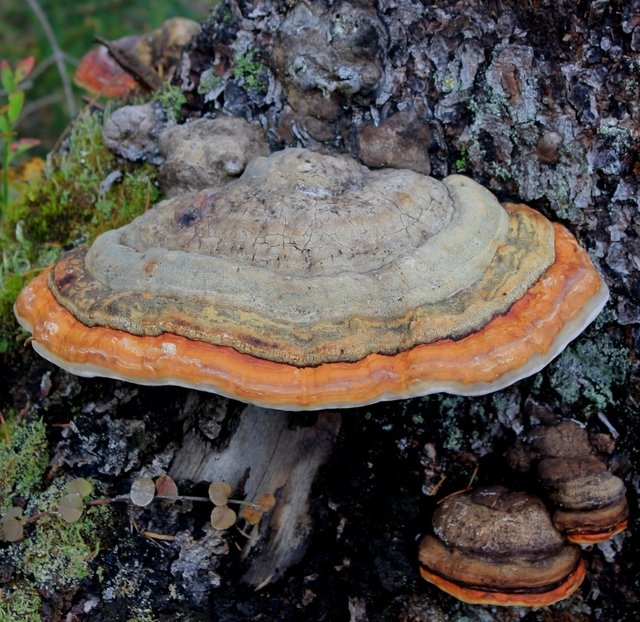
Bordered polypore (Fomitopsis pinicola) is a mushroom of the Fomitopsis family, belongs to the genus Fomitopsis.
Bordered tinder fungus (Fomitopsis pinicola) is a well-known fungus that belongs to saprophytes. It is characterized by perennial fruiting bodies that grow sideways, sessile. Young specimens are round or hemispherical in shape. Over time, the form of mushrooms of this species changes. It can be both hoof-shaped and pillow-shaped.
head: usually medium in size, about 20-25 cm in diameter, but can easily reach 30 and even 40 centimeters (in old mushrooms). The height of the cap is up to 10 cm. Concentric areas are clearly visible on its surface. They differ in color and are separated by depressions. Colors can vary widely, ranging from red to dark brownish red or brown to black at attachment or when ripe, with a white to yellow marginal area.
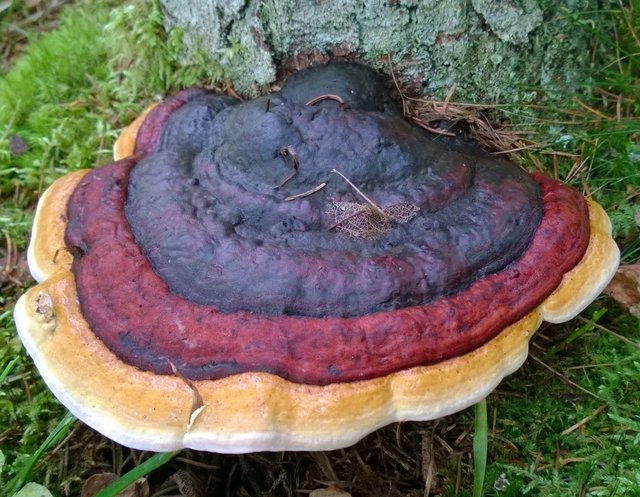
The surface of the cap is covered with a thin skin, lacquered-shiny on the edge or in very young mushrooms, later becomes matte, and closer to the center – a little resinous.
Leg: missing.
If the weather is humid outside, then droplets of liquid appear on the surface of the fruiting body of the bordered tinder fungus. This process is called guttation.
Very young bordered tinder fungus also guttate:
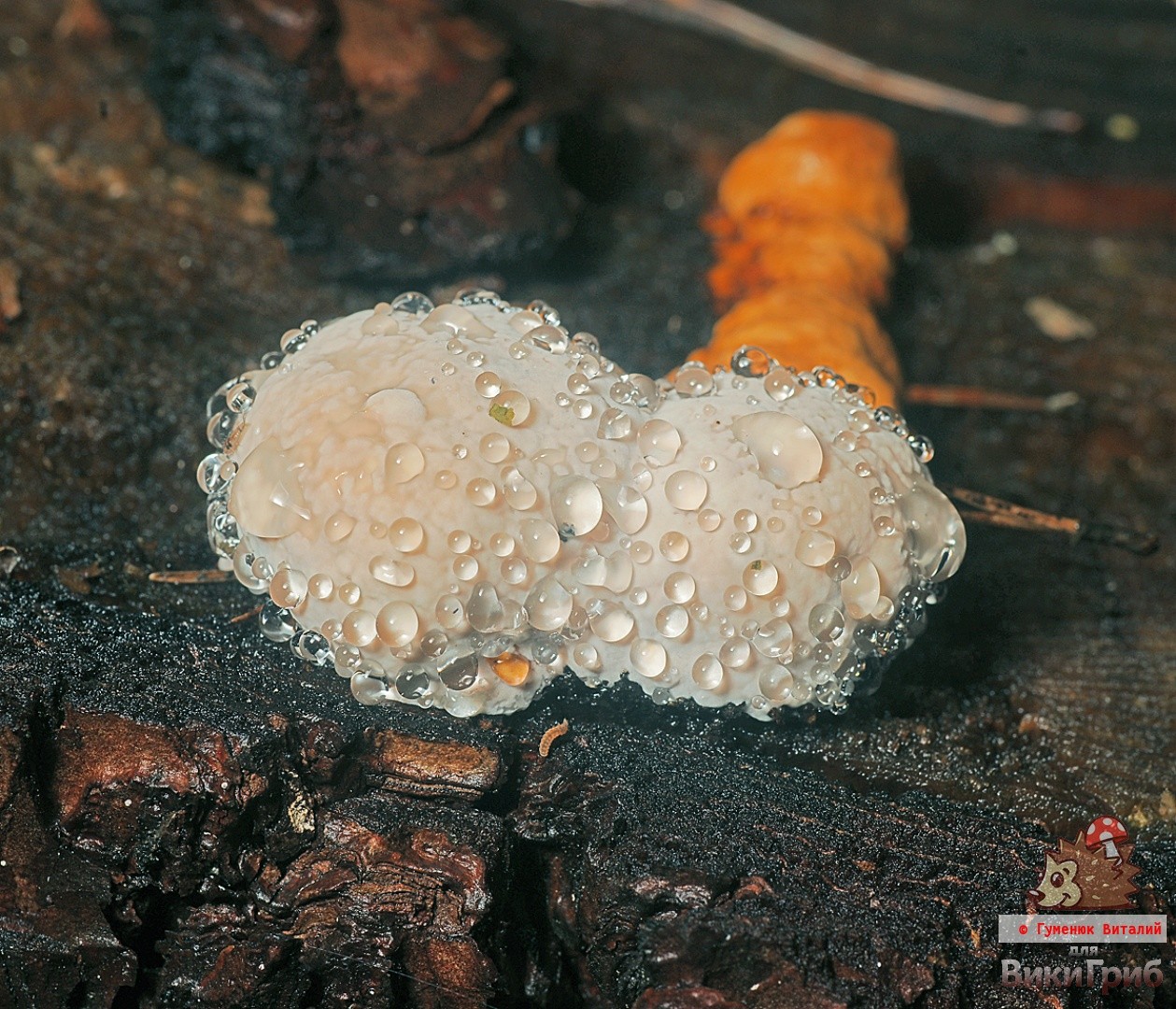
And older specimens in the period of active growth:
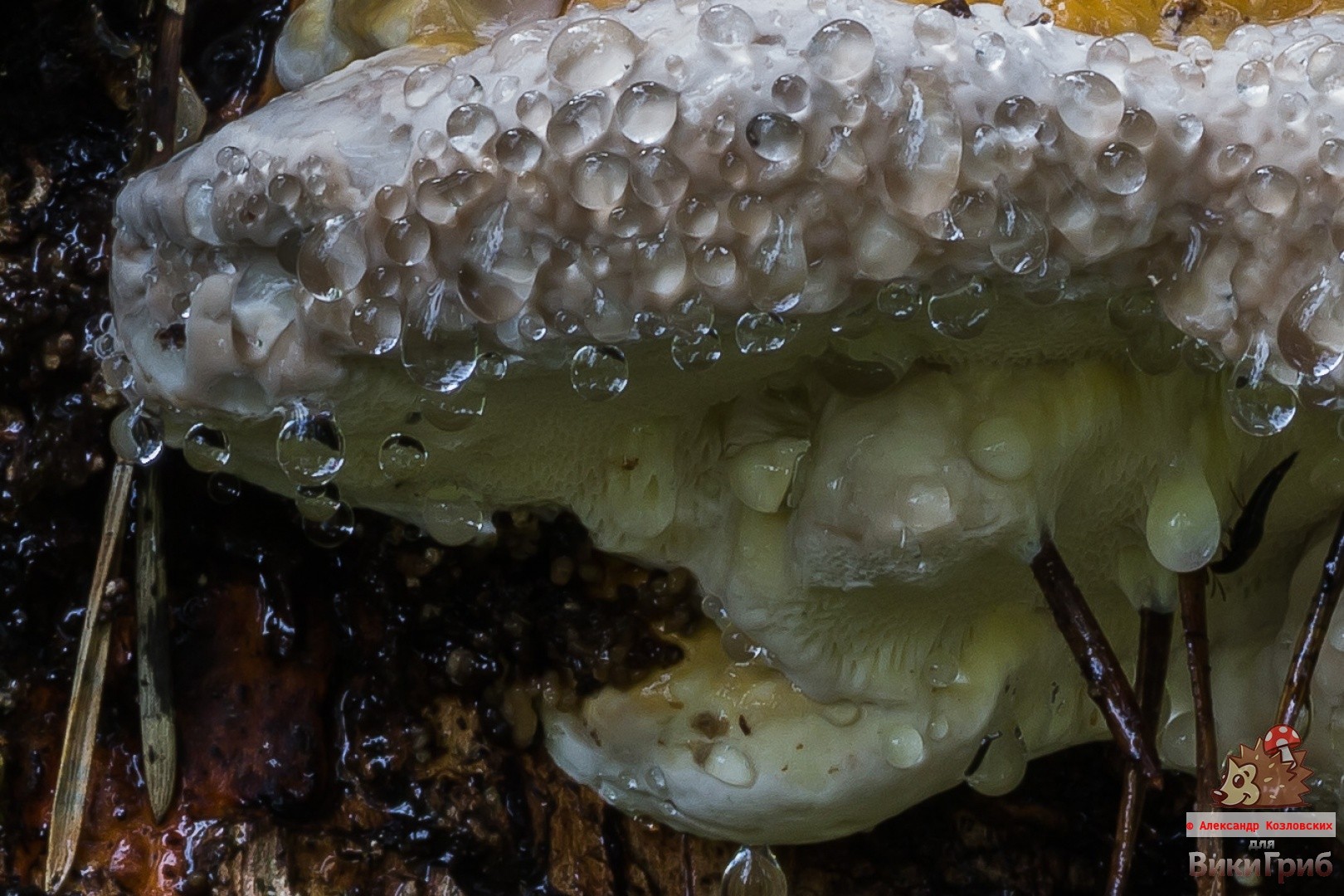
Pulp fungus – dense, elastic, the structure resembles a cork. Sometimes it can be woody. When broken, it becomes flaky. Light brown or light beige (in mature fruiting bodies – chestnut).
Hymenophore: tubular, cream or beige. It darkens under mechanical action, becoming gray or dark brown. The pores are rounded, well-defined, small, 3-6 pores per 1 mm, about 8 mm deep.

Chemical reactions: KOH on flesh is red to dark brown.
spore powder: white, yellow or cream.
Споры: 6-9 x 3,5-4,5 microns, cylindrical, non-amyloid, smooth, smooth.
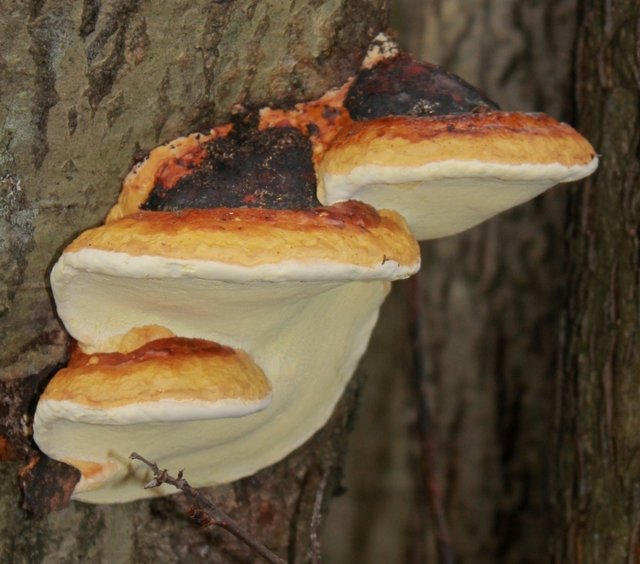
Bordered tinder fungi are classified as saprophytes, provoke the development of brown rot. It occurs in many regions, but most often in Europe and Our Country.
Despite the epithet “Pinicola”, from pinūs – pine living on pines, pine, Trutovik fringed successfully grows on deadwood and dead wood of not only coniferous, but also deciduous trees, on stumps. If a living tree is weakened, then the fungus can also infect it, starting life as a parasite, later becoming a saprophyte. Fruiting bodies of bordered tinder fungi usually begin to grow at the bottom of a tree trunk.
Edible. Used to create mushroom-flavoured flavored condiments. It is a raw material for homeopathic medicines. It is successfully used in Chinese traditional medicine.
This mushroom is difficult to confuse with others. Unique concentric stripes of different colors on the surface of the cap are the decoration and calling card of this mushroom.
Bordered polypore (Fomitopsis pinicola) causes serious damage to timber yards in Siberia. Causes wood decay.
Photo: Maria, Maria, Aleksandr Kozlovskikh, Vitaly Humenyuk.









